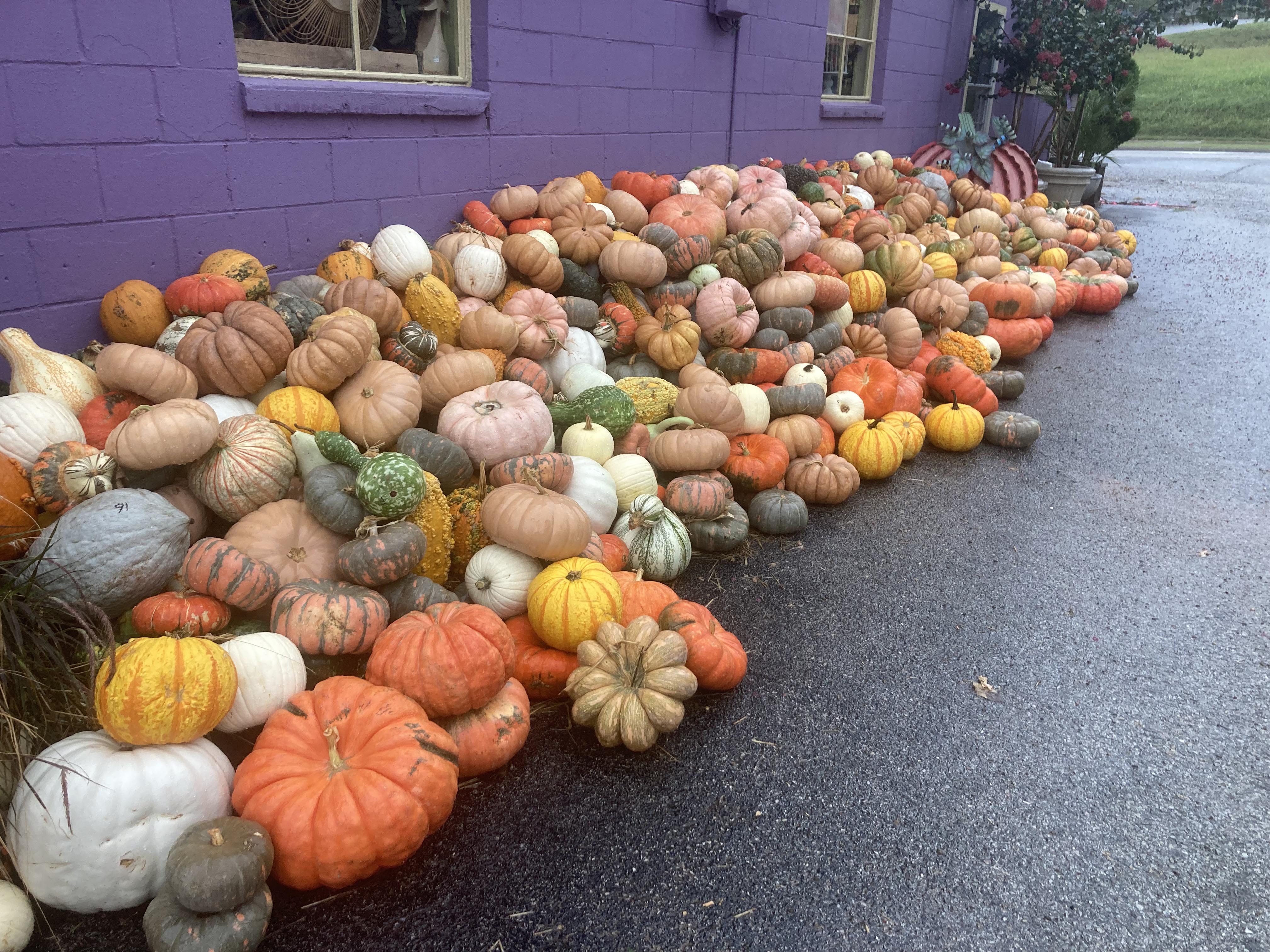Pumpkins and Other Squashes
Contact
University of Arkansas System Division of Agriculture
Cooperative Extension Service
2301 S. University Ave.
Little Rock, AR 72204

Pumpkins and Other Squashes
Fall has a look about it as the leaves turn and all manner of squashes show up on our porches. The squashes are all pumpkin relatives. They are so mixed up and have been interbred for so long that even DNA analysis has not quite been able to untangle their kinship. Peering at a pile of winter squashes is much like watching the Westminster Dog Show and realizing that, yes indeed, as different as they are, they are all dogs.
Pumpkins and squashes are, along with corn, beans, sunflowers, potatoes, tomatoes, peppers, peanuts, cacao, vanilla, blueberries, avocado, mangos, pecans and others, the New World’s contribution to world cuisine. Of the three principal domesticated crops grown by most Native American tribes – corn, beans and the squashes – the squashes were the first to be domesticated.
Squash probably originated in Central America. Ten-thousand-year-old seeds have been found in caves in that area, making it one of the first domesticated food crops along with Old World staples such as wheat and oats.
Taxonomically the squashes belong to the Cucurbita genus which is comprised of from 13 to 30 species, depending on your preference for lumping or splitting. Of these, five are cultivated. Of the five, Cucurbita pepo, is the most important with the species concept having been stretched and twisted to include everything from egg-sized ornamental gourds to pumpkins the size and weight of a sleeping cow.
Cucurbits are a notoriously promiscuous group with male and female flowers produced on the same plant. But male flowers mature first, so bees can and do their part in mongrelizing the squash patch. Some geneticists theorize that the diversity seen in C. pepo is because the species is best considered a cultigen – a plant with no exact counterpart found in the wild.
The garden world has conveniently divided C. pepo cultivars into summer and winter squash. The summer squashes have thin, edible skins, seeds lacking a hard shell and no talent for long-term storage. The winter squashes have hard, inedible skins, edible though hard-shelled seeds and can be stored for several months at the end of the growing season. Having had our fill of zucchini and other summer squash, we now run headlong into winter squash season.
Early European explorers – even Columbus – described what we believe to be cultivated squashes everywhere they went. Columbus saw them in modern-day Cuba but called them “calebazzas,” or gourds, mistaking them for the dipper gourds grown in Europe which originally came from Africa. Hernando de Soto saw them on his trip into Arkansas in 1541; Cartier noted “gros melons” (pumpkins) along the St. Lawrence Seaway in modern-day Canada in 1535.
Some of the early European dissatisfaction as a food for all these unique squashes was because of name confusion and lack of familiarity. Calling them “melons” and expecting a sweet cantaloupe flavor would cause them to be called inferior. The name squash is taken from a Narragansett word, “askutasquash,” which means a green vegetable eaten raw, obviously a summer squash. It was first used in English in 1643. The word pumpkin is an adaption of a Greek word, “pepon,” which referred to a large melon. The French changed it to “pompon,” which the English morphed into “pumpion,” which finally became pumpkin. The word “gourd” first appeared in English in the 13th century and refers to a hard-shelled fruit used as a dipper. Though unclear how, it is etymologically related to the Latin word for cucumber. The hard-shelled dipper gourd being referred to was of African origin, not the New World.
Though not initially taken with winter squashes, the Pilgrims developed a taste for them after enduring their first hard New England winters. A common way of serving them was to roast them in an open fire and then drizzle tallow and honey over the peeled flesh. Because they stored well, they became an important food to help get through the long winters.
